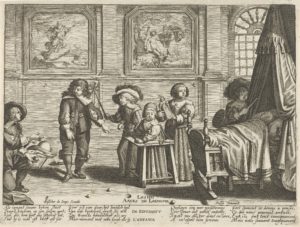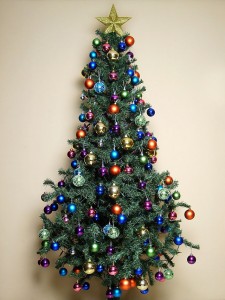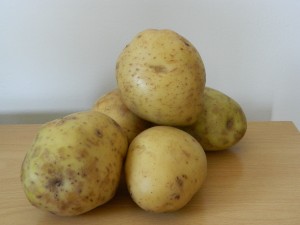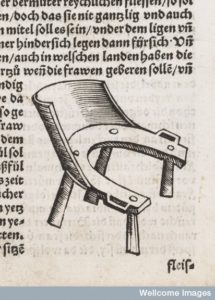
I have always been intrigued reading 17th and 18th century newspaper advertisements for medical remedies by the locations in which these products were sold and from whom they could be purchased. Looking at the drugs advertised in almanacs Louise Hill Curth has argued that patent and proprietary drugs – those with a name sold as commercial products – were predominantly made in London in the manufacturers home.1 In provincial areas drugs like these could be purchased in provincial shops and grocers.2
Many of the drugs offered for sale in London could be bought from a wide range of sellers and shops. Commonly they might be available in pubs and coffee-houses. ‘The famous OYL for giving Ease in the Gout’ was sold “with a Paper of Directions and Virtues” at Man’s Coffee-house in Charing Cross, according to an advert appearing in the London Gazette in August 1691.3 The ‘Elixir of Scurvy-grass’ incorporated horseradish and scurvygrass with an appropriate liquid according to the ‘Spagerick Art’ and could be purchased for one shilling a glass from Mr Joseph Sabbarton at the Norwich Coffeehouse, or from a range of sellers and merchants around the city. Blagrave’s Spirit of Scurvy Grass could be bought from at least eighteen different people in London, including booksellers, grocers, printers, a milliner, a perfumer, and two cheese mongers.
 The connection between coffee shops, pubs, and food retailers and medicines perhaps make sense given the close connections that existed between food and medicines in the early modern period – although this was waning in the eighteenth century according to some scholars. However, other connections make slightly less sense to my modern eyes, particularly the numbers of drugs and treatments that could be bought in toy shops. These were shops that sold trinkets and fripperies, rather than just children’s toys.
The connection between coffee shops, pubs, and food retailers and medicines perhaps make sense given the close connections that existed between food and medicines in the early modern period – although this was waning in the eighteenth century according to some scholars. However, other connections make slightly less sense to my modern eyes, particularly the numbers of drugs and treatments that could be bought in toy shops. These were shops that sold trinkets and fripperies, rather than just children’s toys.

The ‘True Plaister’ which was apparently ‘much Esteem’d for taking away Corns’ and keeping ‘the Feet always Easy’ could be bought from Mrs. Foster’s toy shop at the Hospital-gate, West-Smithfield.4 Mr Allcroft’s toy shop near the Royal Exchange offered ‘true Imperial Golden-Snuff’ for sale that cured all known diseases of the head and brain and immediately counteracted headaches, drowsiness, sleepiness, and giddiness.5 Alternatively you could buy ‘Royal Snuff’, which cured deafness, palsy, migraines, and apoplexy from Mr. Adam’s toy shop located near St Jame’s Park.6
Mr Allcroft evidently sold a range of medicines at various times, in 1713 the Postboy listed an advert for the ‘Royal Chemical Wash Balls’ noting that they were now only sold at Mr Allcroft’s toy shop. These not only made the skin delicate, soft and smooth, but also treated ring-worms, sunburn, scurf, pimples, and redness caused by small-pox.7 Another cosmetic medicine was sold by Mr. Markham, from his toy shop in Fleet Street. This time it was an ‘Incomparable Powder for cleaning the Teeth’ that killed tooth-worms, healed scurvy in the gums and prevented tooth-ache.8
Reproductive and sexual health remedies were also available. An advert for the ‘Vivfying drops’ which cured barrenness in women and ‘Imbecillity’ (impotence) in men by ‘potently strengthen[ing] and corroborat[ing] the parts of Generation’ noted that they were sold by Mr Radford at his toy shop at the Rose and Crown against St Celement’s Church-yard in the Strand.9 (Radford also sold a tincture for the teeth, breath and gums).10 While Mr Lockton’s toy shop offered both a book on the treatment of venereal disease and ‘The Grand Antidote’ for the same condition.
In at least one case the remedy was intended to treat children and I can’t help but wonder if at least one parent eased the prescription of a medicine by buying the patient a new toy. According to a December 1707 issue of the Postboy the ‘pleasant Chymical Drops’ to cure ‘Rickets in Children’, which rejuvinated children, made them ‘brisk, airy, and pleasant’, improved their appetite, and strengthened their limbs, could be purchased as Mrs Bradbury’s toy shop in Stocks Market.11
Evidently it was not only possible to buy a medicines from a range of retailers throughout the city, it was evidently possible to acquire a whole gamut of drugs, potions, and plasters from toy shops and toy sellers.
_________
1 Louise Hill Curth, ‘Medical Advertising in the popular press: almanacs and the growth of proprietary medicines’, in L. Hill Curth (ed.) From Physick to Pharmacology, 29 – 48, p. 40.
2 Ibid, p.43.
3. London Gazette (London, England), August 24, 1691 – August 27, 1691; Issue 2691. 17th-18th Century Burney Collection Newspapers.
4. Daily Courant (London, England), Wednesday, June 18, 1707; Issue 1668. 17th-18th Century Burney Collection Newspapers.
5. Daily Courant (London, England), Friday, April 7, 1710; Issue 2638. 17th-18th Century Burney Collection Newspapers.
6. Evening Post (1709) (London, England), October 23, 1712 – October 25, 1712; Issue 501. 17th-18th Century Burney Collection Newspapers.
7. Post Boy (1695) (London, England), December 17, 1713 – December 19, 1713; Issue 2904. 17th-18th Century Burney Collection Newspapers.
8. Daily Courant (London, England), Friday, May 24, 1717; Issue 4865. 17th-18th Century Burney Collection Newspapers.
9. Weekly Journal or Saturday’s Post (London, England), Saturday, October 21, 1721; Issue 150. 17th-18th Century Burney Collection Newspapers.
10. London Journal (1720) (London, England), Saturday, November 11, 1721; Issue CXX. 17th-18th Century Burney Collection Newspapers.
11. Post Boy (1695) (London, England), December 25, 1707 – December 27, 1707; Issue 1968. 17th-18th Century Burney Collection Newspapers.




2 thoughts on “Toy shop Treatments”
Comments are closed.